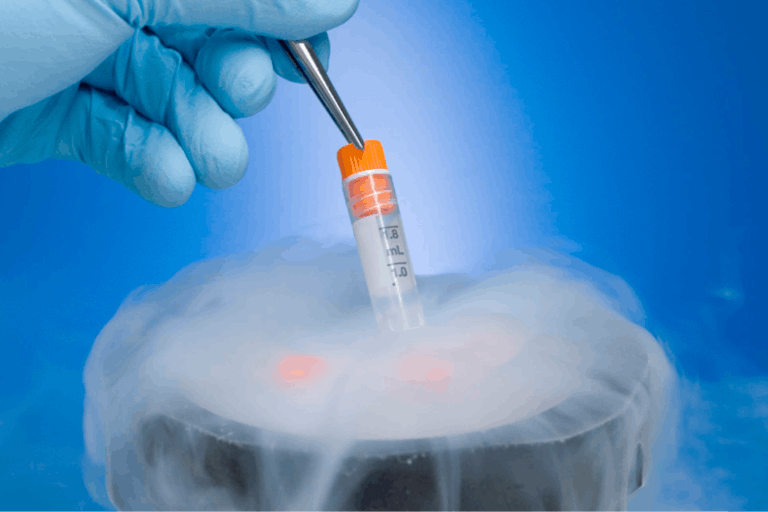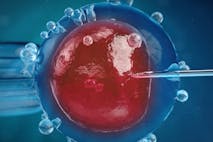
European Parliament advances proxy voting for pregnant members
Angeline Tan
·
California couple files lawsuit against Connecticut company for destroying their embryos
A California couple has filed a lawsuit against a Connecticut company that they say “destroyed” their embryos by using a defective culture media.
Margarita Komarova and Colin McDarmont said that last November they underwent IVF treatment at a fertility clinic using products made by CooperSurgical in Trumbull, Connecticut. They later learned that their embryos were destroyed because “their otherwise healthy embryos had been placed into fundamentally defective embryo culture media, made by Defendants CooperSurgical and Cooper Companies,” notes the complaint. “The lab director from Plaintiffs’ clinic explained the surprising news: Cooper’s media altogether lacked one of the most critical, and uniformly standard, ingredients for proper embryonic development – magnesium.”
Magnesium is necessary to support healthy embryo development and it allegedly improves the chances of successful implantation.
The complaint against CooperSurgical also states, “Plaintiffs understandably experienced significant distress following this devastating loss of highly personal and precious embryos, after an extremely expensive and highly invasive process. They blamed themselves and wondered if they would ever be able to have children. The pain was even worse, however, when they found out three weeks later the destruction of their embryos was a preventable tragedy.”
The complaint said this “gross negligence” has happened with Cooper Companies and Cooper Surgical in the past.
“We never thought that a company could be so careless and negligent to allow for this to happen,” Komarova and McDarmont said. “By speaking out and bringing legal action to really demand answers, we hope to prevent any other couple from going through that pain and the challenges we faced.”
While this carelessness and negligence are truly serious, the practice of IVF is itself controversial because it commodifies children in a highly eugenic process — it rates them, discriminates against them, and often either discards or indefinitely freezes those human embryos who don’t measure up to certain standards. Typically, those with the supposed best chance of success are implanted. Many who consider themselves pro-life believe that IVF itself is pro-life because it creates babies. However, there is much to consider ethically in this process:

This recent incident with the California couple is not the first time the fertility industry has come under fire for the destruction of embryos.
Article continues below
Dear Reader,
Have you ever wanted to share the miracle of human development with little ones? Live Action is proud to present the "Baby Olivia" board book, which presents the content of Live Action's "Baby Olivia" fetal development video in a fun, new format. It's perfect for helping little minds understand the complex and beautiful process of human development in the womb.
Receive our brand new Baby Olivia board book when you give a one-time gift of $30 or more (or begin a new monthly gift of $15 or more).
In August, over 700 patients of Monash IVF, an Australian fertility business, received a $56 million settlement flowing the destruction of embryos there. And in a story that made national headlines in the U.S., an Alabama fertility clinic, the Center for Reproductive Medicine, was sued by the parents of embryos who were destroyed when a patient at the hospital where the embryos were being kept was able to gain unauthorized access to the cryogenic embryo storage area and remove several embryos. Felicia Burdick-Aysenne and Scott Aysenne sued, and the case made it to the Alabama Supreme Court, which ruled that the couple’s suit could move forward and their embryos could be considered children under the state’s Wrongful Death of a Minor Act.
That ruling set off a series of events, including the temporary cessation of IVF practices at some fertility clinics in the state due to an apparent misunderstanding of the ruling, and also led to a political firestorm over IVF and the personhood of embryos as human beings.
Though some claim that embryos created via IVF are not actually alive or human, science advisor Dr. David Prentice previously told Live Action News, “If they are really saying that an embryo is ‘not alive’ because it is just a few cells as a clump, that is an assertion not based on science but on their ideology.”
Some question how the embryo could be alive if it can be frozen. Dr. Prentice explained:
The most straightforward answer is the evidence that when thawed, the embryo continues its growth and development, picks up where it left off, and when implanted into the uterine lining can gestate. Molecular motion is not completely stopped but is slowed to infinitesimal rates.
The freezing process includes use of cryopreservative chemicals that replace the water in the cells (to prevent ice crystal formation) and stabilize the cell membranes. It works because embryos are frozen when they only have a few, up to maybe 100-150, cells. Even then, not all cells may survive the thawing (water that is still present creates ice crystals that rip the cell) and the more damage, the less survival of an embryo.
This is also why the process doesn’t work for a newborn, or even a whole organ, as there are too many cells to try to cryopreserve and will be too much damage from thawing.
Call on President Trump to pardon the FACE Act prisoners on his first day in office.
Live Action News is pro-life news and commentary from a pro-life perspective.
Contact editor@liveaction.org for questions, corrections, or if you are seeking permission to reprint any Live Action News content.
Guest Articles: To submit a guest article to Live Action News, email editor@liveaction.org with an attached Word document of 800-1000 words. Please also attach any photos relevant to your submission if applicable. If your submission is accepted for publication, you will be notified within three weeks. Guest articles are not compensated (see our Open License Agreement). Thank you for your interest in Live Action News!

Angeline Tan
·
International
Angeline Tan
·
Issues
Cassy Cooke
·
Issues
Sheena Rodriguez
·
Issues
Cassy Cooke
·
Issues
Angeline Tan
·
Activism
Nancy Flanders
·
Opinion
Nancy Flanders
·
Investigative
Nancy Flanders
·
Analysis
Nancy Flanders
·
Politics
Nancy Flanders
·